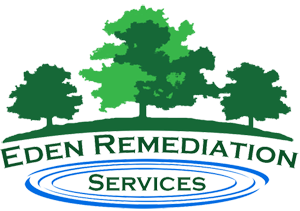Enhanced Bioremedial Approaches
Bioremediation is the breakdown of contaminants through microbial metabolism. Enhanced bioremediation can be accomplished through direct injection, blending methods, or permeable reactive barriers (PRBs). The process occurs through a transfer of electrons from one substance to another resulting in usable energy for the microorganisms. This transfer of electrons requires a “donor” material or “food source” and an “acceptor” material. In natural uncontaminated systems, food sources are limited which causes a competition among indigenous microbial populations for available electron donors. Enhanced bioremediation attempts to restore the balance in the natural system by adding nutrients and donor substrates for consumption by the microbes.
 Petroleum products typically act as electron donors and quickly degrade if an adequate supply of electron acceptors is introduced into an aquifer system. Chlorinated solvents, however, are poor electron donors but can act as electron acceptors and degrade under anaerobic conditions. As the donor substrate is metabolized under anaerobic conditions, an electron (hydrogen ion) is released and used to replace a chlorine atom attached to the carbon chain for the chlorinated solvent. This process is known as reductive de-chlorination and is deemed complete when the chlorinated hydrocarbon is reduced to ethene or ethane and chloride.
Petroleum products typically act as electron donors and quickly degrade if an adequate supply of electron acceptors is introduced into an aquifer system. Chlorinated solvents, however, are poor electron donors but can act as electron acceptors and degrade under anaerobic conditions. As the donor substrate is metabolized under anaerobic conditions, an electron (hydrogen ion) is released and used to replace a chlorine atom attached to the carbon chain for the chlorinated solvent. This process is known as reductive de-chlorination and is deemed complete when the chlorinated hydrocarbon is reduced to ethene or ethane and chloride.
Advantages of Enhanced Bioremediation often include lower cost, effectiveness on low concentrations, and ease of application. Limitations include limited effectiveness on sites with NAPL and elevated contaminant concentrations, slower reactions due to microbial processes, and ineffectiveness on some compounds.
